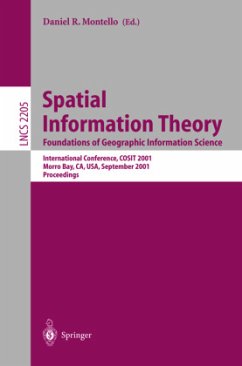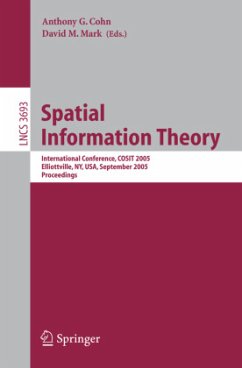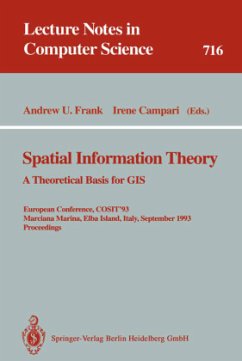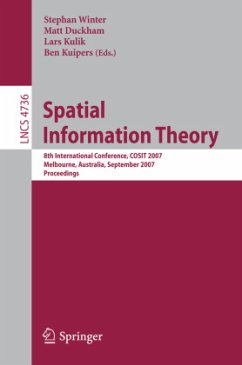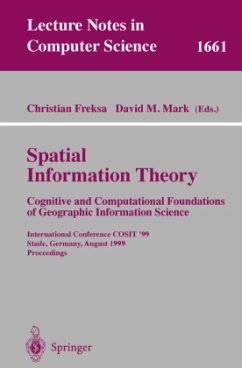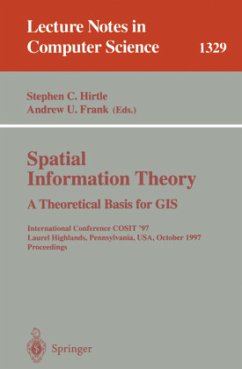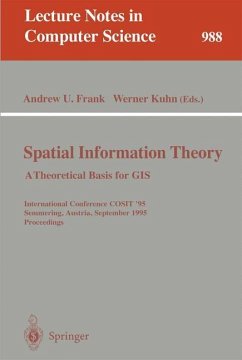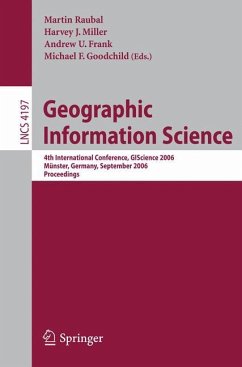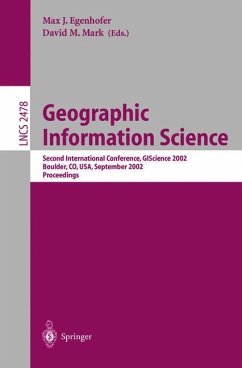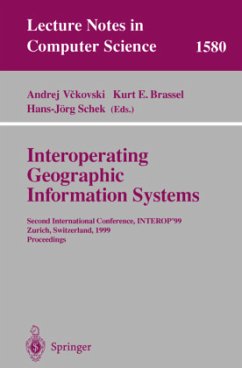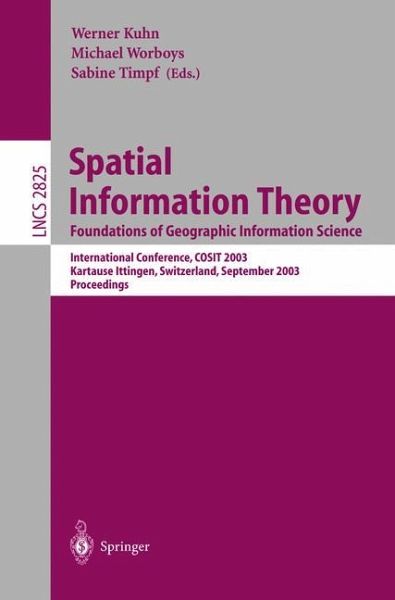
Spatial Information Theory. Foundations of Geographic Information Science
International Conference, COSIT 2003, Ittingen, Switzerland, September 24-28, 2003, Proceedings
Herausgegeben: Kuhn, Werner; Worboys, Michael F.; Timpf, Sabine

PAYBACK Punkte
20 °P sammeln!
COSIT,theseriesofConferencesonSpatialInformationTheory,hasbeenaround for more than ten years. Its hallmarks are a fruitful interdisciplinary dialogue between computational and human perspectives on spatio-temporal information and a thorough review process that selects the best papers while giving all - thors detailed feedback on how to develop their work. A clear pro?le of the COSIT community has emerged from the series of conference proceedings, all published as Springer Lecture Notes in Computer Science, and from the per- nent web site at cosit. info, containing links to the conference web s...
COSIT,theseriesofConferencesonSpatialInformationTheory,hasbeenaround for more than ten years. Its hallmarks are a fruitful interdisciplinary dialogue between computational and human perspectives on spatio-temporal information and a thorough review process that selects the best papers while giving all - thors detailed feedback on how to develop their work. A clear pro?le of the COSIT community has emerged from the series of conference proceedings, all published as Springer Lecture Notes in Computer Science, and from the per- nent web site at cosit. info, containing links to the conference web sites and proceedings, a history and program of the series, an impact study, interviews with participants, and pictures. The proceedings of this sixth conference provide ample evidence that COSIT is healthy and maturing, while retaining its youth. Out of the 61 submissions, the program committee selected 26 papers for presentation, in discussions based on at least three double-blind reviews and one or more meta-review from PC members for each paper. Classical COSIT themes, such as spatial reasoning (about distances and directions, regions and shapes) or vagueness are being f- ther re?ned; topics like way?nding and landmarks are boosted by new synergies betweencognitiveandcomputationalapproaches;andthestudyofontologiesfor space and time, a subject since the ?rst COSIT, is gaining more depth.





